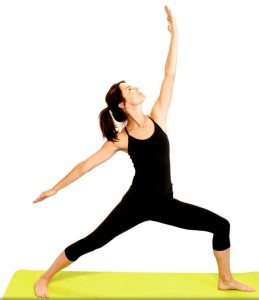THE YOGA OF EATING
THE YOGA OF EATING
By AMY BISAZZA
The Yoga of Eating, a small but significant movement in wellbeing circles. Many of us are overly concerned with diets and body weight, embodying a ‘living to eat’ approach to food rather than an ‘eating to live’ mentality. This attitude can promote negative eating habits that can cause us to under eat, over eat and poorly digest food. By mirroring the principles of yoga you can change your attitude to food, helping you achieve a more balanced and healthier approach to eating.

Yoga is about establishing balance; balance between strength and flexibility, resisting and yielding, relaxing and tensing. Sometimes a slow, gentle restorative practice is essential for the body to let go and recover, other times a strong, dynamic practice where postures are held for some time can help to relieve a sluggish state. The Yoga of Eating is focused on finding balance also. It’s about understanding your body’s needs, knowing when to repair and rest and knowing when to energize.
Irrespective of whether you practice yoga or not, the Yoga of Eating can be experienced by all. Preparing, cooking and eating food can become a meditative, healing and joyful ritual every single day. We become more one-pointed in our actions as our concentration levels increase and our feelings of dispersion decrease.
Yet with our busy and frenetic lifestyles, there is a constant battle with finding time to fit everything in. In a world that commends multitasking, there seems to be limited opportunity for just focusing and enjoying one thing at a time, especially meals. If we are really motivated to create a positive eating ritual, we can challenge old attitudes and unlearn poor eating habits.

Set the intention to have just one meal each day as a yogi would by following these guidelines:
- Turn all music, T.V and computers off, turn all phones off and SIT DOWN
- Take seven long, deep breaths in and out before eating
- Try eating in silence or just being mindful of conversation
- Feel gratitude for the food you are about to eat
- Put space between each mouthful. It’s important to try and eat SLOWLY
- Stay aware of your natural breathing
- Chew food completely and be aware of each mouthful
- When finished feel gratitude in the body and stay sitting for some time before doing anything else
- Don’t eat after sunset (7-8pm) and eat a small meal in the evening, more salad and vegetables preferably
- Give your digestive system a rest with a half day fast once a week
If you cannot manage to follow all the guidelines, just take a handful instead and incorporate them into your daily mealtimes, and again note if it makes any difference to your digestion, stress levels or quantity of food eaten.
You may find that, after eating in this way the body becomes calm and the mind more one pointed (focused only on eating), awareness of taste is increased and flavours are savoured more. The stomach has time to understand when it is satiated, it signals to the brain before it gets too full, so you eat less. Also the parasympathetic nervous system is stimulated because the body and mind are in a calm state and so digestion improves.
It’s important not to deny yourself anything, but instead become completely attentive to eating patterns without judgement, without guilt, without wanting it to be different, just silently and patiently observing. In the long term, this has proven to be effective in gaining more self-control, weight loss and ultimately more enjoyment in food.
Meal times are meant to be a communal time of sharing and laughing, and at the same time the principles of eating with awareness can still be upheld. Funnily enough the love hormone, oxytocin, is apparently released when we eat together with other people, this is the same hormone that is released during birth, and helps bond mother and baby, and it is released when we feel we are falling in love. So sitting together with others to eat can be very healing on many levels.

About the Author:
Amy Bisazza is the resident yoga expert at SportsShoes.com. She’s been practising yoga for over 14 years and teaching for 6 years, she is a British Wheel of Yoga accredited teacher and trained as a Hatha Yoga teacher with the Yoga Academy in 2007.
